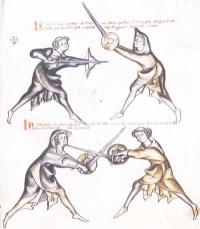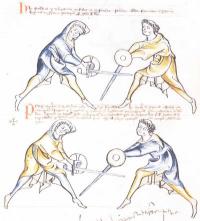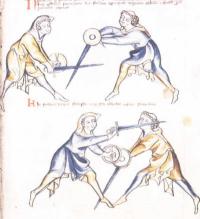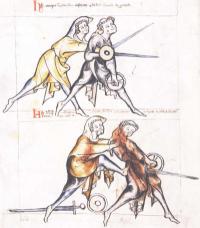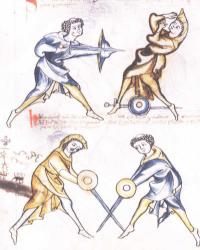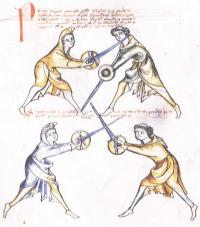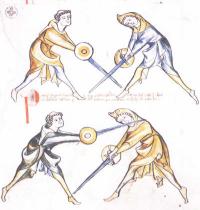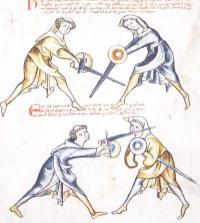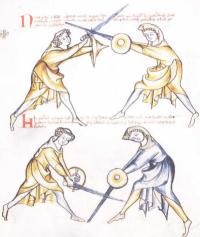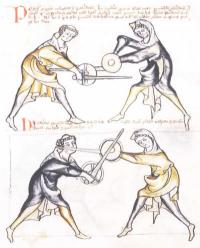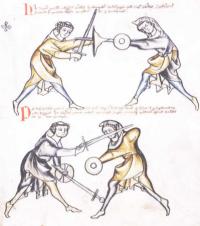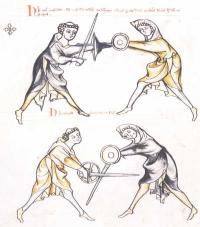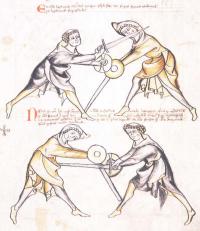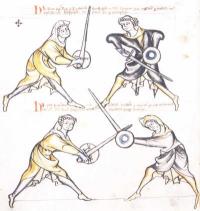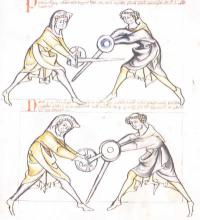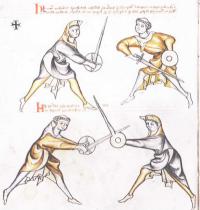 Notes on this presentation
Notes on this presentationThe following presentation of I.33 was composed by Dieter Bachmann, 2003 on behalf of the Freywild, a historical fencing school in the Czech Republic. It was determined that Mr. Bachmann's presentation was the best and most comprehensive presentation of the I.33 on the Internet, and therefore, it was felt that it was redundant to attempt to create yet another presentation of the same material. Most of the original presentation remains intact, however, some changes in the structure were incorporated with the intent to help improve the navigation and accessibility of the original presentation. Any additional content by AEMMA added to this presentation is highlighted in purple.
